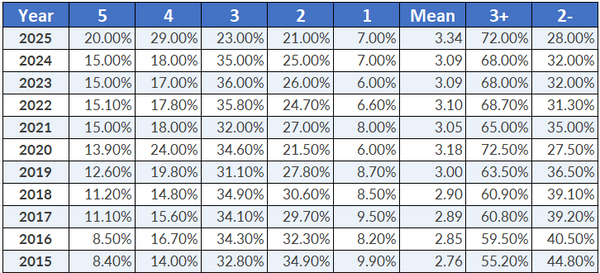
AP Physics Topics
AP Physics Exam Format

Changes to the AP Physics Exams Starting in 2025
-
Unified Exam Structure
All four AP Physics exams (Physics 1, Physics 2, Physics C: Mechanics, and Physics C: Electricity & Magnetism) will follow the same format:-
Multiple Choice (MCQ): 40 questions, 80 minutes
-
Free Response (FRQ): 4 questions, 100 minutes
-
-
Removal of Complex Question Types
The previous multiselect and paragraph-length response questions will be eliminated. Question types are now more focused, which reduces the overall difficulty. -
Extended Exam Time for Physics C
The duration of the AP Physics C exams has nearly doubled. As a result, students will no longer be able to take Physics C and another Physics exam on the same day.
Impact Analysis
-
AP Physics 1 & 2
-
Before: 90 minutes for 50 MCQs → ~1.5 minutes per question
-
Now: 80 minutes for 40 MCQs → 2 minutes per question
-
FRQs reduced from 5 to 4, and multiselect questions removed
👉 Overall, fewer questions, more time per problem, and simpler formats
👉 Likely outcome: average scores and pass rates will rise significantly starting in 2025
-
-
AP Physics C (Mechanics & E&M)
-
Both exams will feature more questions and much longer testing time
-
Still rigorous, but with heavier workload and pacing demands
👉 Likely outcome: fewer students will earn a score of 5, with more clustering in the 3–4 range
-
AP Score Distributions
AP Physics 1 (Algebra Based) Score Distribution

AP Physics 2 (Algebra Based) Score Distribution

AP Physics C Mechanics Score Distribution

AP Physics C Electricity and Magnetism Score Distribution

Major AP Science Exams Score Distribution


Physics Courses Advice
Recently, many parents have reached out to ask about course planning for the upcoming school year. I'd like to share my thoughts here for your reference:
If your child is considering majors such as Electrical Engineering, Computer Science, Mechanical Engineering, Aerospace Engineering, or Civil Engineering—or is simply interested in these areas—I strongly recommend completing both AP Physics C: Mechanics and Electricity & Magnetism (E&M) during high school.
Why?
1. These college majors require a strong foundation in physics. Getting ahead in high school will make university-level coursework much easier.
2. Even though AP Physics C may not always be explicitly required by colleges, a strong physics background is often an important factor when top STEM programs review applications.
My advice by grade level:
For 9th and 10th graders:
Start with AP Physics 1. It focuses on mechanics and has 8 units in total. It’s one of the more challenging AP subjects, with a historically lower average score, but it builds a solid foundation for future physics studies—especially AP Physics C.
For students who’ve just finished AP Physics 1 or are entering 11th grade:
If your school schedule is tight, or you want to streamline your academic path, I recommend skipping AP Physics 2 and moving straight to AP Physics C: Electricity & Magnetism (E&M).
Why? If a student did well in AP Physics 1, they’ve already covered about 90% of the content in AP Physics C: Mechanics. The remaining 10% includes about 5% new concepts and 5% basic calculus tools. So, it’s very doable to self-review Mechanics, start officially studying E&M, and take both AP Physics C exams in next year May.
Why take both AP Physics C exams in 11th grade?
Colleges review your transcript during the admissions process, including the courses you’ve taken and the scores you’ve earned. Completing AP Physics C by 11th grade demonstrates strong academic ability and a readiness to take on challenging STEM coursework—qualities that stand out to top tech schools like MIT, Caltech, Carnegie Mellon, and Berkeley.
If you have any questions about your specific situation, feel free to reach out. I'm always happy to help.